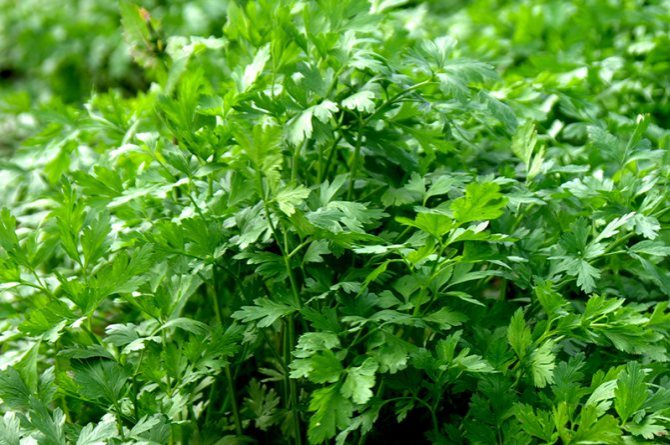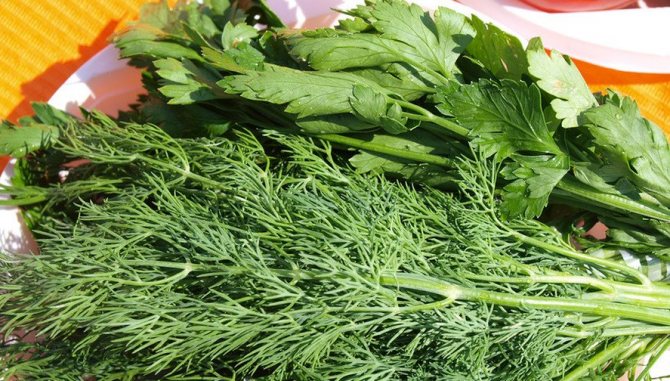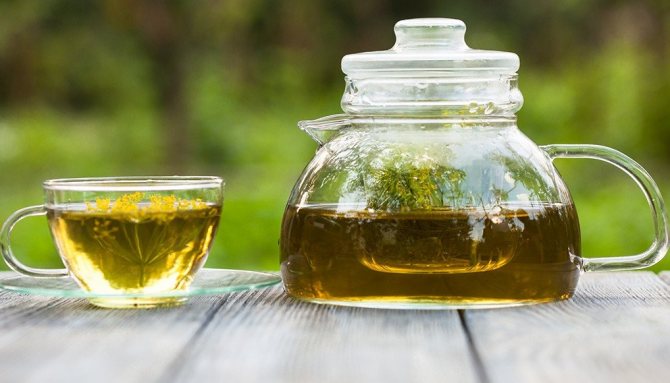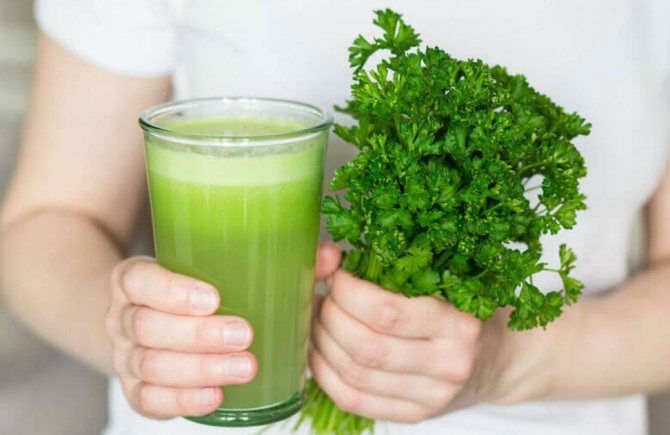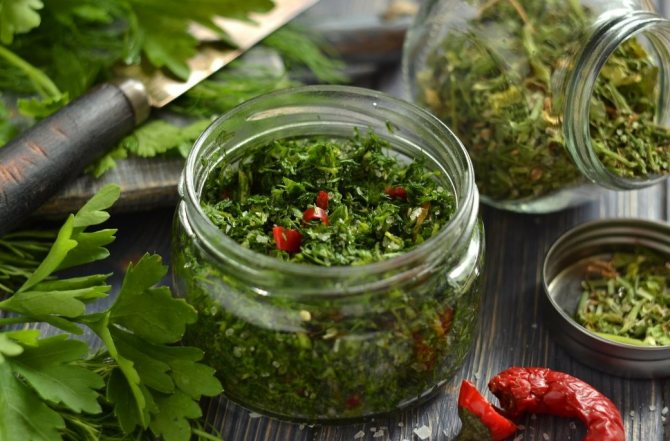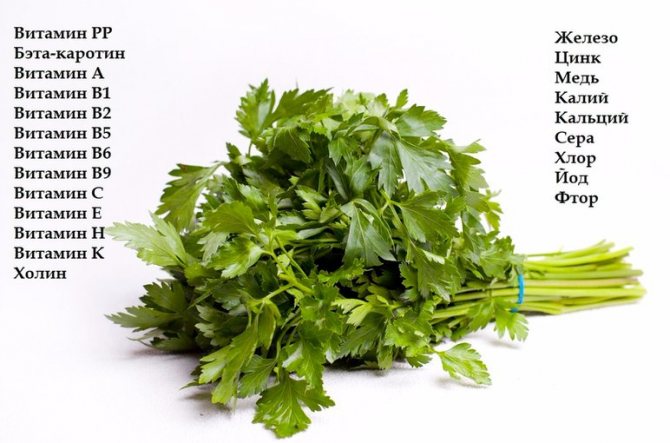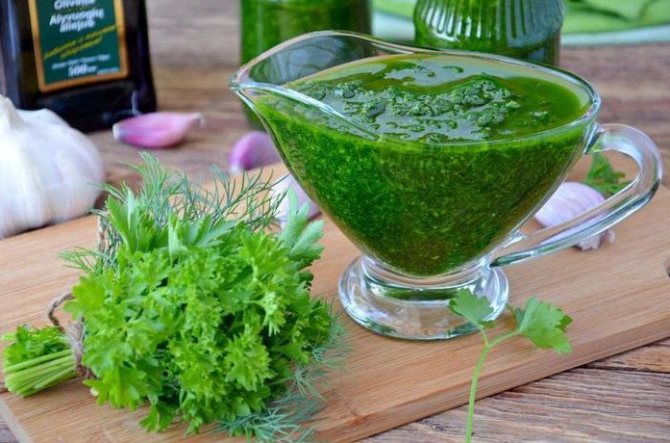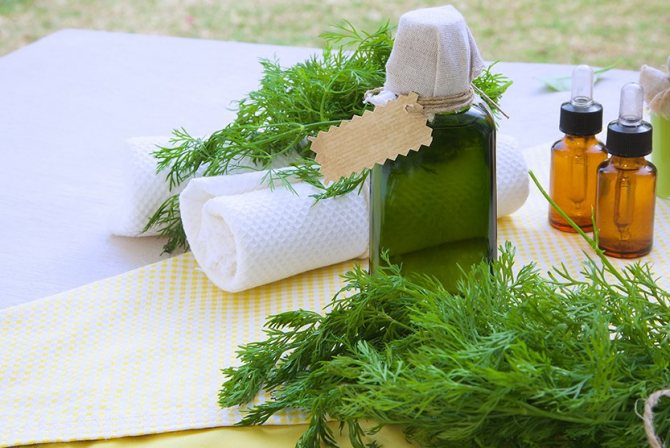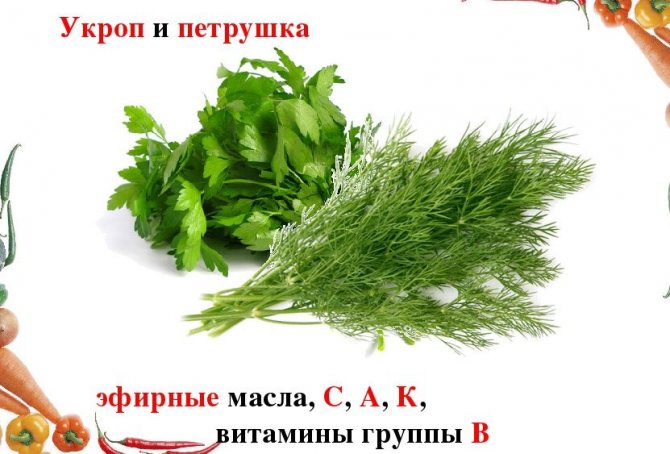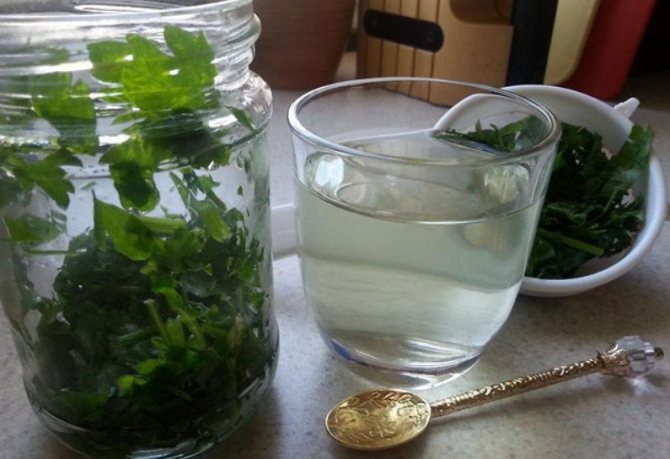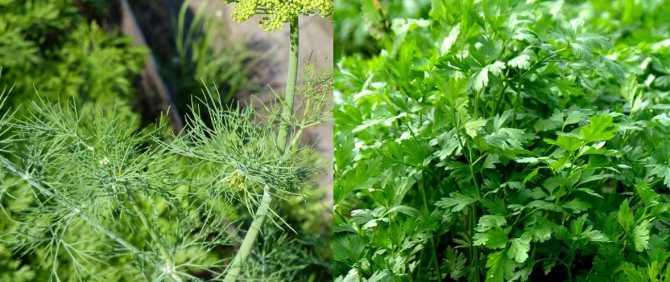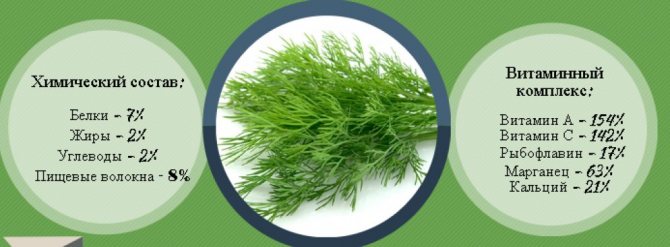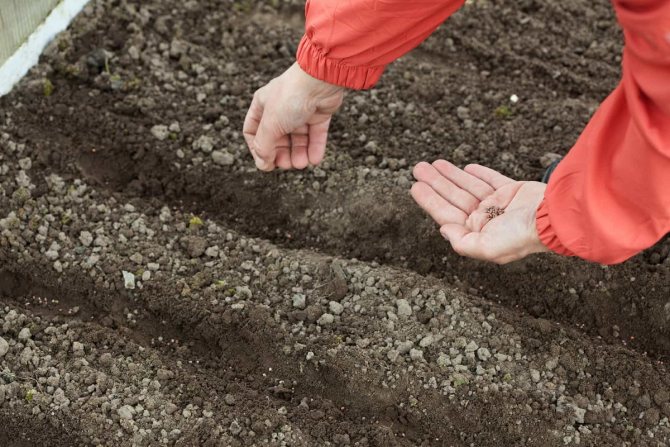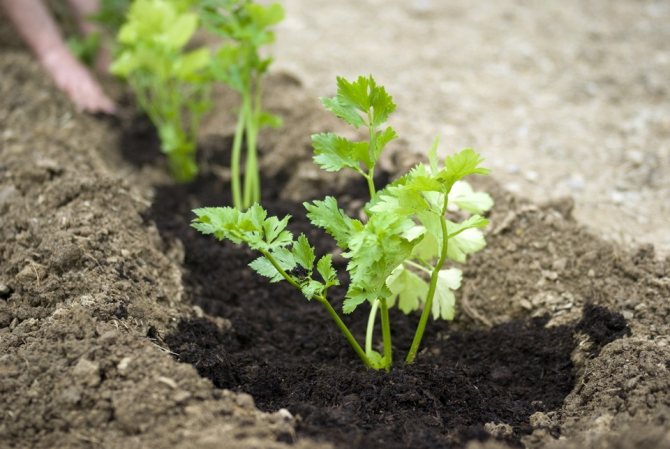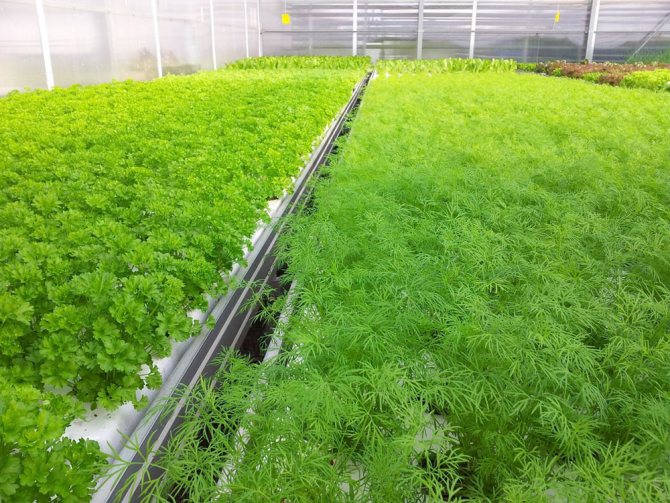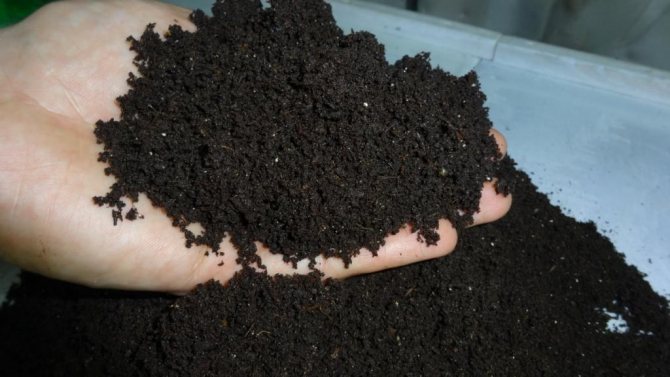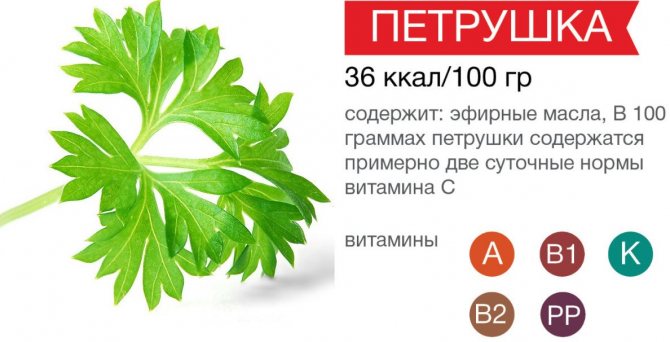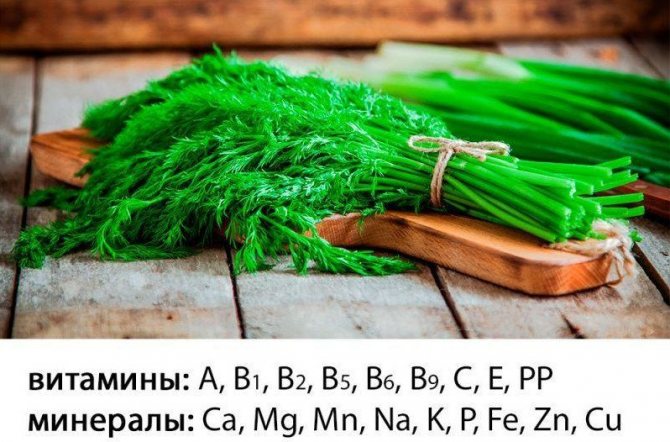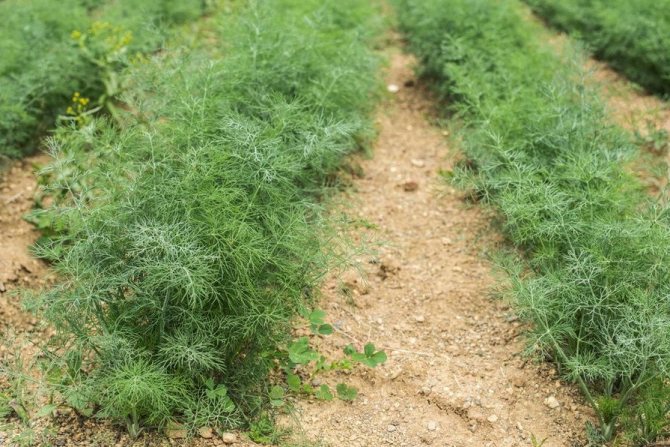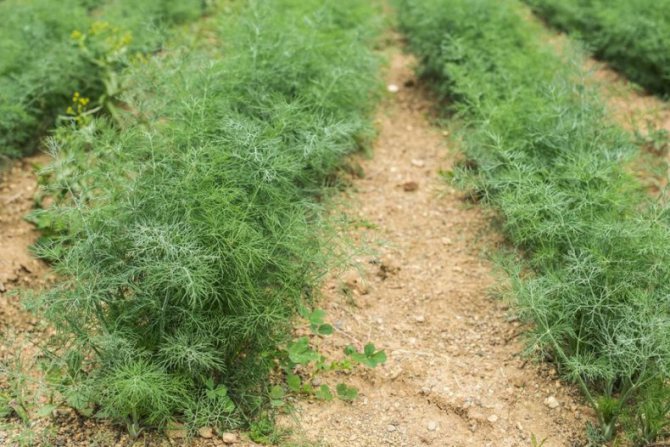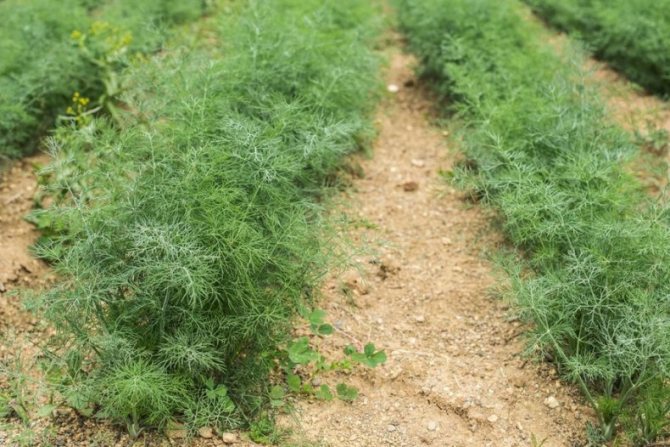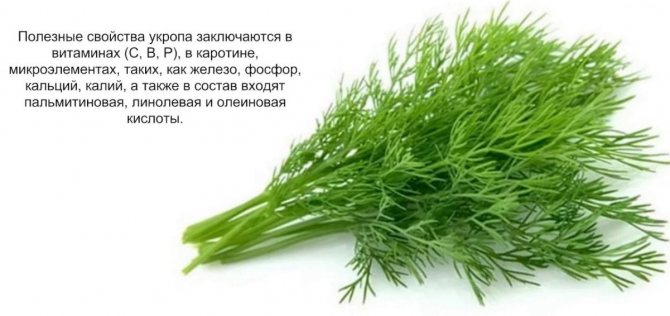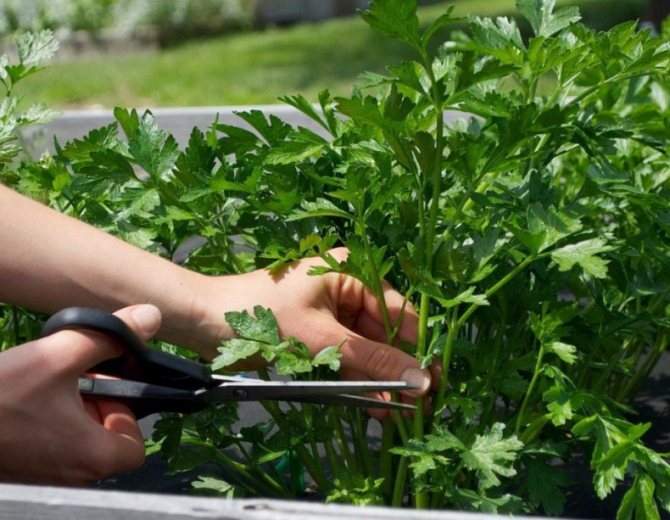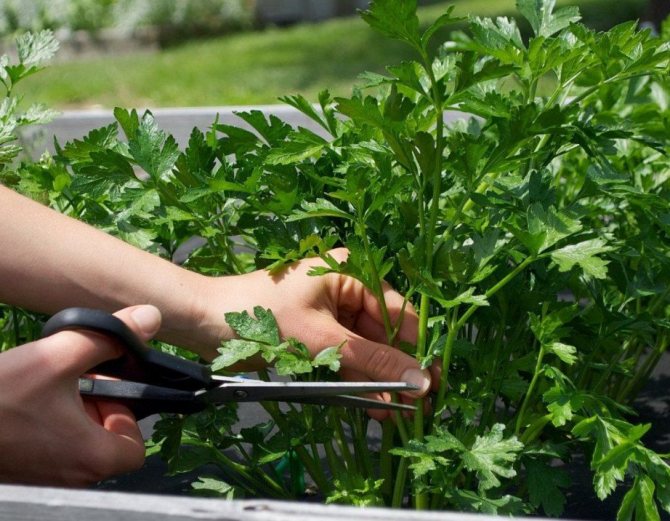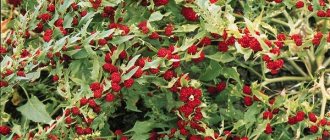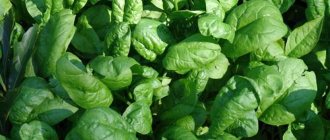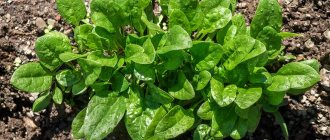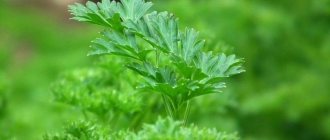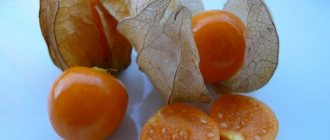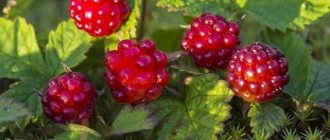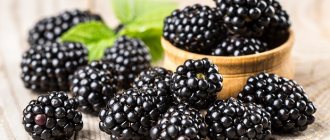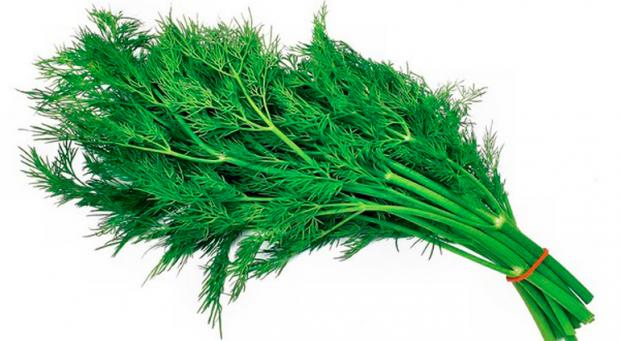
Greens are vitamins, we all know that. For example, the terribly beneficial vitamin K! And it is necessary to eat greens all year round, since it grows well in greenhouses, and therefore you can easily eat greens in the fall and cold winter, when it may be most needed ... For example, parsley and dill. Let's compare them
What are the benefits of dill and parsley?
1) Dill is a very useful herb, improves the functioning of the digestive system.
2) Dill also helps to digest fatty foods, relieves stomach pain, improves appetite, has a choleretic
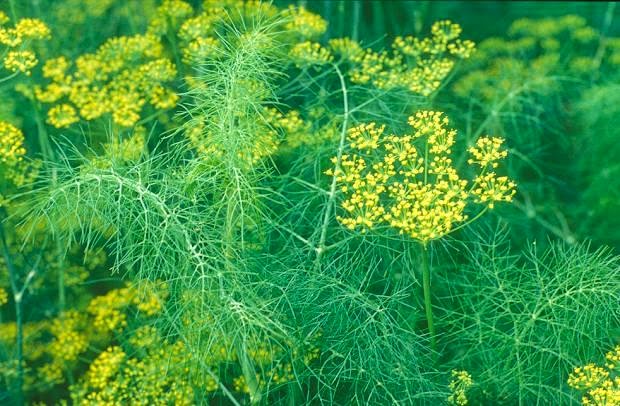

action, increases the secretion of gastric juice, soothes colic, reduces bloating of the abdomen.
3) It is very useful to use dill for overweight people with salt deposition and also for diabetics.
4) This useful herb helps with hypertension, angina pectoris, heart rhythm disturbances, atherosclerosis, perfectly soothes, helps with insomnia.
But in large quantities it is contraindicated in pregnancy, as well as with low blood pressure.
The healing properties of parsley:
- leader in vitamin C content, it is three times more than in lemons;
- contains phosphorus, calcium, iron much more than any vegetables;
- improves appetite, digestion, stimulates the secretion of digestive enzymes;
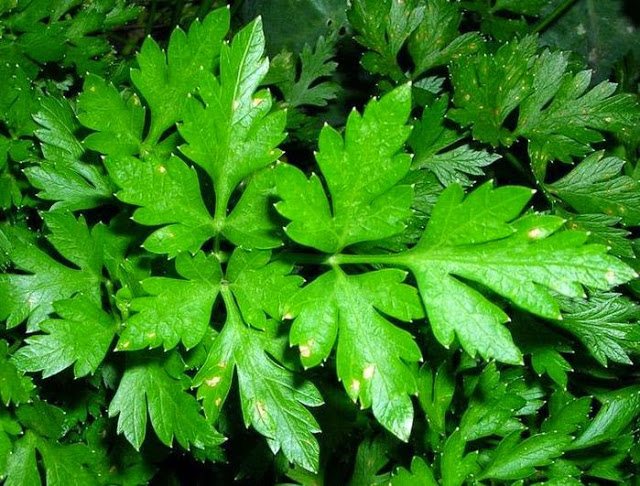

- cleanses the body, urinary tract, liver, kidneys;
- has a diuretic effect;
- useful for edema, hypertension;
- copes with inflammatory diseases of the gums, freshens breath;
- indispensable for gastritis with low acidity, indigestion.
Men lean on parsley; it contains erection-prolonging substances.
But parsley should not be consumed during pregnancy and when kidney disease worsens.
Green onions benefit and harm
Just one hundred grams of green onions a day and you will provide yourself with vitamin C for the whole day. Green onions contain vitamins PP, B6, calcium, iron, carotene, potassium.
- Fresh onion lowers blood sugar and is therefore recommended for diabetics.
- Onions improve digestion, stimulate appetite.
- Useful for blood diseases.
- It is an excellent choleretic agent that normalizes the composition of bile, stimulates the emptying of the gallbladder,
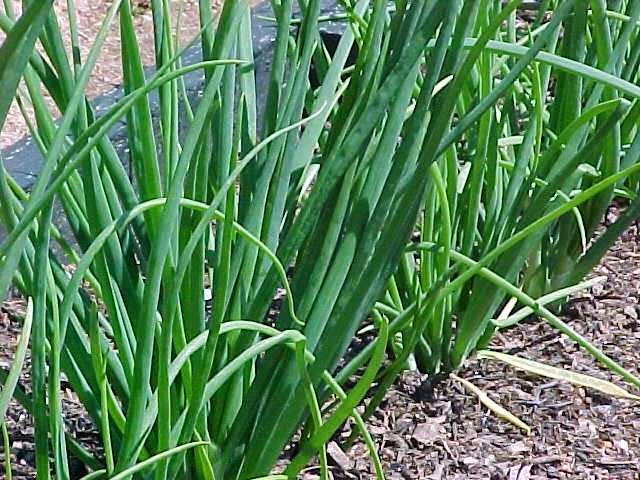

prevents the formation of stones. - Green onions contain phytoncides that have a detrimental effect on various microbes. Therefore, it is useful for diseases of the upper respiratory tract and nasopharynx.
The most valuable in green onions is the white fleshy leg and green feathers, but no more than 10 centimeters from the white leg. Eating the rest of fresh green onions can cause headaches, irritability, and stomach fermentation.
It is not worth overusing green onions at all, as it contains hard-to-digest fiber and substances that irritate the stomach and intestines. In acute liver diseases, pancreatitis and diseases of the gallbladder, it is undesirable to use green onions.
But, however, the harmful properties of green onions can be weakened by soaking them in salted water for about 30 minutes and eating with vegetable oil.
Basil and cilantro - medicinal properties
The aroma of basil is provided by essential oils.
How is basil good for you?
- This plant has a strong antimicrobial effect.
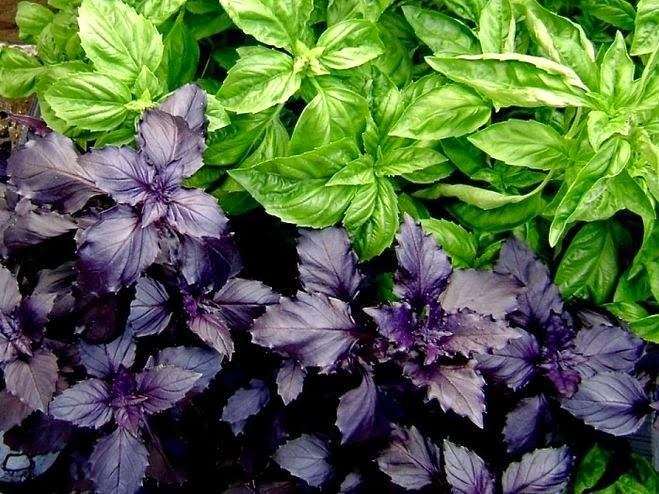

- It helps with insomnia.
- Improves digestion.
- Relieves headaches.
- Promotes the secretion of gastric juice.
- Helps with stomach and intestinal cramps, bloating, colic.
- Basil contains vitamin P, which strengthens capillaries, and provitamin A, which plays a huge role in metabolic processes, the rate of cell renewal is normalized and the skin becomes young and elastic.
In medieval times, basil was considered a herb that kindles passion in women and men.
But basil increases blood pressure for hypertensive patients should not be consumed.
Why is cilantro useful?
- It contains vitamin C, P, B vitamins, carotene.
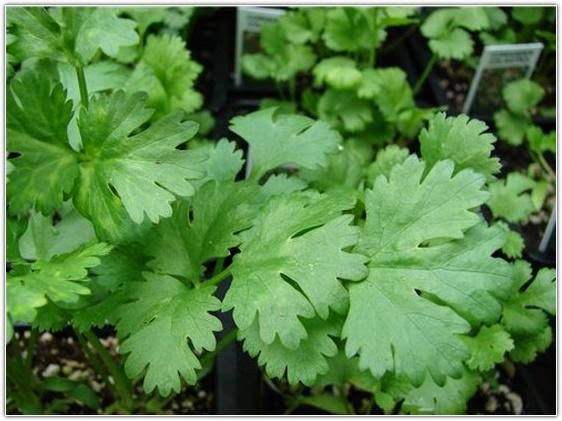

- This herb reduces blood pressure.
- Improves sleep.
- Increases appetite.
- It helps to improve digestion, as it has a choleretic effect.
- It is good to use cilantro in the treatment of colds and stomach diseases.
- Vitamins contained in cilantro strengthen eyesight.
But it should not be used for stomach ulcers, cardiac arrhythmias, coronary heart disease.
Healing properties of sorrel and watercress
1) Sorrel. The tender young leaves contain a lot of vitamin C, iron, potassium, therefore, using sorrel, you get rid of vitamin deficiency and anemia. Sorrel contains a lot of vitamin C, so iron is well absorbed and hemoglobin rises.
With gastritis, when there is a weak secretion of gastric juice, sorrel increases acidity and thereby normalizes digestion. Small doses of sorrel juice have a choleretic effect.
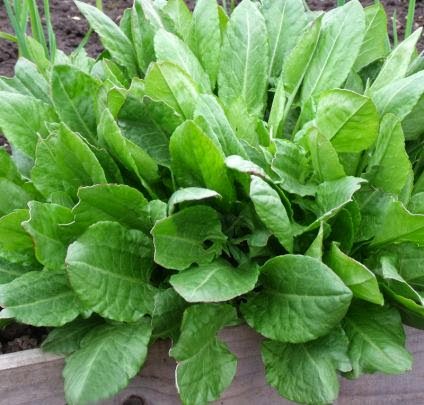

In July, the sorrel season ends, its leaves become rough, a lot of oxalic acid accumulates in them, this is not good for the body. Excessive consumption of sorrel can lead to urolithiasis. Also, sorrel is not recommended for inflammatory processes in the kidneys and intestines, gastritis, when acidity is increased, disorders of water-salt metabolism, peptic ulcer disease.
Dill for the liver
Composition and benefits
Dill contains the following elements: iron, natural acids, vitamins, calcium, phosphorus, potassium and ascorbic acid. The tool has a diuretic, expectorant and analgesic effect on the human body. it also helps to improve vision and digestion.
Application for the liver
- Broth, promotes the outflow of bile. To prepare it, you should:
- Bring the greens to a fine state.
- 3 tbsp. pour spoons of this raw material with boiled water (200 ml).
- Put on fire and boil for 10 minutes, then leave to infuse for 1 hour.
- Filter the liquid and add water to fill the volume up to 200 ml.
- The medicine is consumed in 100 ml in the morning, lunch and in the evening 30 minutes before meals.
- Infusion based on dill seeds. To prepare such a remedy:
- Take 1 tbsp. l. seeds and pour boiling water (200 ml).
- Insist 15-20 minutes.
- The liquid is filtered and cooled.
- Drink the infusion should be 1 tbsp. l. every 2-3 hours.
Back to the table of contents
Contraindications and harm
Before starting therapy with dill-based medicines, you should consult with your doctor. If you use medicinal decoctions and infusions made with dill for a long time and in unlimited quantities, then a person may feel general weakness, drowsiness and decreased vision, nausea and indigestion.
People with blood pressure problems and a tendency to allergies are especially at risk. Dill is contraindicated in women during pregnancy.
Parsley for the liver
Composition and benefits
Parsley contains many useful trace elements that have a beneficial effect on the human body. It is used in folk medicine for the treatment of many diseases. Also, parsley is used to strengthen hair and as a sedative during periods of depression and psychological disorders. This plant contains such elements;
- vitamins;
- zinc, iron and calcium;
- essential oils;
- lithium and phosphorus;
- inulin;
- cellulose;
- fructose;
- phosphorus.
Back to the table of contents
Folk recipes
Parsley has a positive effect on the liver and biliary tract. Medicines based on it, when using complex therapy, will help to establish the functioning of the organ and improve its condition. Traditional medicine offers such recipes based on parsley:
- Can be used raw or cooked.
Broth. For cooking you will need:
- Finely chop the branches of the plant.
- 1 tbsp. pour a spoonful of raw materials with 1 glass of water.
- Boil for 1 minute, then let it brew.
- Strain the broth.
- Take 2 tbsp. l. before eating, 3 times for 24 hours.
- Infusion:
- 1 tsp pour the seeds of the plant with cold water (200 ml).
- Insist the liquid for 7-8 hours.
- Clear by filtration.
- Consume every 2 hours.
Back to the table of contents
Harm and contraindications
Parsley is often harmless to the human body. The plant must be grown at home. If chemicals that stimulate growth were used, this can lead to negative consequences in the form of poisoning and general weakness. The plant is contraindicated for nephritis, cystitis in an aggravated form and in the presence of a tendency to manifest skin allergies
Fresh herbs can transform every dish, giving it a specific aroma and visually decorating, so many housewives add chopped dill, parsley and green onion feathers to any bowl. This ingredient is not only tasty, but also useful, as it is a valuable source of vitamins and minerals. What is the peculiarity of these plants, how to use them for treatment and culinary preparations, how much and to whom you can use - learn more about this from the article.
Vitamins are not the main thing!
Many people will be surprised to hear that spring greens are rich in beta-carotene, because we are used to thinking that this vitamin is found mainly in bright orange or red vegetables. Dill, onion or parsley cannot boast of a red color, however, in terms of the amount of beta-carotene in one hundred grams, they are not inferior to carrots.
Beta-carotene is absorbed by the body only in the presence of fats. That is why it is customary to put a spoonful of sour cream in a glass of carrot juice. But, since, as a rule, we add greens to ready-made dishes, which contain fats, carotene from dill or parsley is absorbed without any problems.
Sprinkling greens on salad or meat, you enrich the dish with vitamin C, which is not so much in green vegetables as, for example, in sea buckthorn or black currant, but still a lot.
Other benefits of green vegetables include high levels of potassium, magnesium, manganese and vitamin K, which are responsible for blood clotting, wound healing, and calcium absorption.
However, it is worth remembering that we do not use spicy herbs in such quantities to satisfy the body's daily need for nutrients, therefore, it is still not worth considering greens as a full-fledged source of vitamins and microelements.
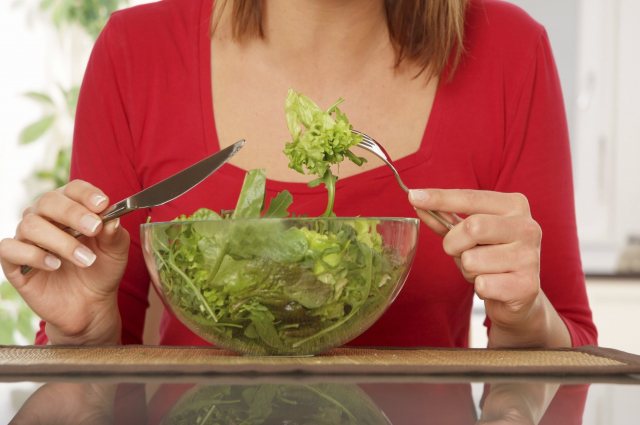

All representatives of the green family have a carminative effect. Therefore, they are helpful for flatulence, bloating, and bowel problems. If you know about these diseases firsthand, feel free to season dishes with herbs or prepare infusions. The recipe is simple: pour 1 teaspoon of chopped dill with 1 cup boiling water, let it brew for 15–20 minutes in a sealed container and take 0.5 cups 2-3 times a day.
In addition, herbs have a sokogonny effect, stimulate the activity of the gallbladder and pancreas. Therefore, green onions or parsley will prevent the appearance of heaviness in the stomach after a hearty meal and improve the well-being of people suffering from gastritis with low acidity.
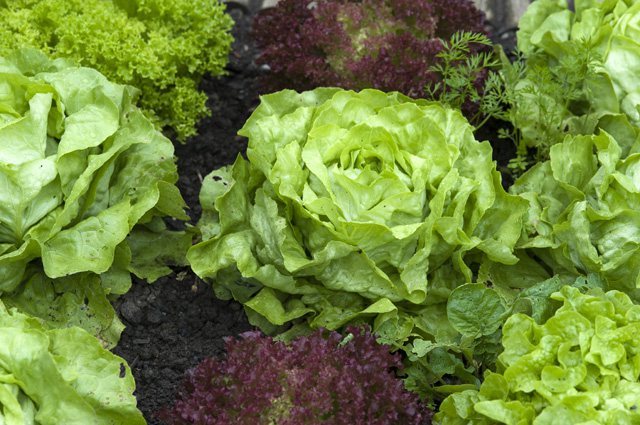

Description and characteristics of two plants
Dill and parsley are common spices that are used both fresh and dry.Both herbaceous plants are short-lived, belong to the Umbrella family, are widely cultivated in vegetable gardens and have useful properties. The branchy stems of curly parsley bear a resemblance to cilantro, which is why they are often confused.
The plant does not live for more than 2 years, is characterized by a thick, spindle-shaped rhizome and glossy cut foliage of a dark green color, develops up to a maximum height of 30 cm. It blooms in mid-summer with greenish-yellow inflorescences.
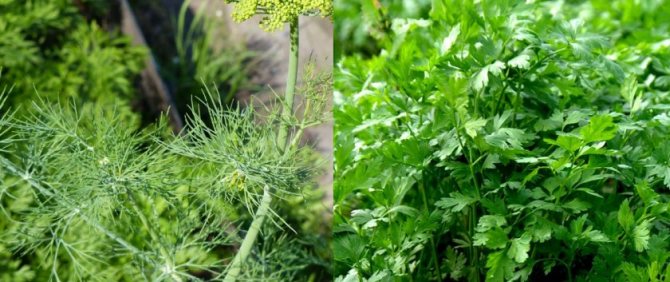

Dill single shoots are curved and feathery foliage. With aging, it brightens. The lower petioles are wider than the upper ones. At the peak of the growing season, the crop can reach 1.5 m in height, but more often it develops within half a meter.
Small, pale yellow, umbrella-shaped inflorescences appear at the end of June. By September, wide-elliptical dark brown grains ripen from them. A feature of parsley and dill is their rich chemical composition, which at the same time has many similarities and differences. The benefits of each of the herbs are shown in the table below.
| Comparative characteristics of the compositions of parsley and dill (in 100 g) | ||
| Constituent substance | Amount in dill | Amount in parsley |
| Water | 85.97 g | 87.71 g |
| Carbohydrates | 4.92 g | 3.03 g |
| Alimentary fiber | 2.1 g | 3.3 g |
| Fats | 1.12 g | 0.79 g |
| Protein | 3.46 g | 2.97 g |
| Ash | 2.45 g | 2.2 g |
| Retinol (A) | 386 mcg | 421 μg |
| Tocopherol (E) | — | 0.53 mg |
| Phylloquinone (C) | — | 1640 mcg |
| Ascorbic acid (C) | 85 mg | 133 mg |
| Thiamine (B1) | 0.06 mg | 0.09 mg |
| Riboflavin (B2) | 0.3 mg | 0.1 mg |
| Pantothenic acid (B5) | 0,4 mg | 0,4 mg |
| Pyridoxine (B6) | 0.19 mg | 0.09 mg |
| Folate (B9) | 150 mg | 152 mg |
| Niacin (PP) | 1.57 mg | 1.31 mg |
| Choline (B4) | — | 12.8 mg |
| Potassium | 738 mg | 554 mg |
| Calcium | 208 mg | 138 mg |
| Magnesium | 55 mg | 55 mg |
| Sodium | 61 mg | 56 mg |
| Phosphorus | 66 mg | 58 mg |
| Iron | 6.59 mg | 6.2 mg |
| Manganese | 1.26 mg | 0.16 mg |
| Copper | 0.15 mg | 0.15 mg |
| Selenium | — | 0.1 μg |
| Zinc | 0.91 mg | 1.07 mg |
Sowing time in open ground
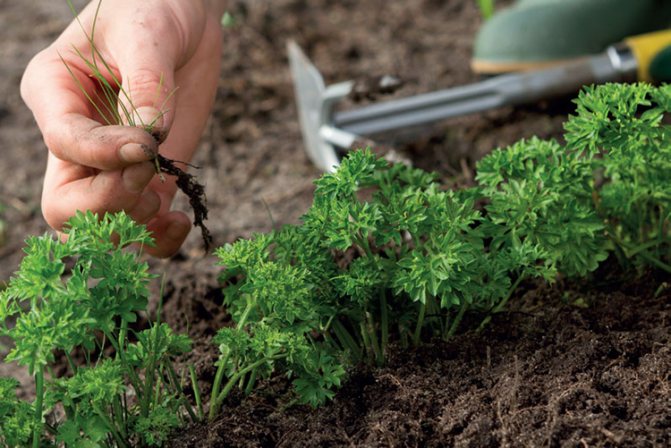

The time for sowing parsley in open ground begins in the second half of April. Parsley is resistant to cold, easily withstands frost. It can be planted at a temperature of + 1 ... + 5 ° С.
Sowing time for parsley depends on the type of plant and the region. In the southern regions of Russia and the middle lane, parsley is sown in open ground from March 1 to 25, in the Far East region - March 20-30, in the Urals and Siberia - from April 20.
Depending on the desired period for obtaining fresh herbs, parsley can be sown in the garden from the beginning of the spring season until mid-summer. Parsley takes a long time to rise. Planted on greens in April, it will only be usable in June.
Even a plant sown in summer will have time to give one harvest and prepare for winter. Experienced gardeners recommend sowing root parsley no later than May, so that full-fledged root crops can form before autumn.
Benefits and medicinal properties
Dill seeds and greens, as well as parsley are harvested for medicinal purposes. These plants have a beneficial effect on the human body.
Parsley
A dry product does not differ from a fresh one in the composition of nutrients, but acquires a slight bitterness in taste. The amount of some vitamins and minerals in one bundle corresponds to the daily requirement of a person.
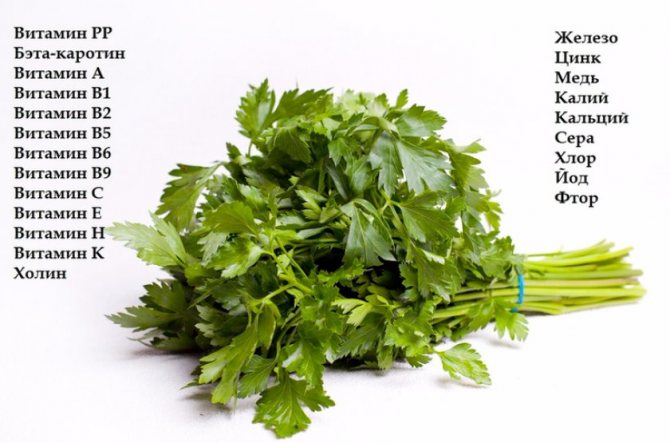

Dill
The plant's rich chemical composition is the main reason for its widespread popularity.
- Fragrant dill twigs, as well as infusions and decoctions made from them, with regular consumption, are capable of:
- resist anemia;
- improve the body's defenses;
- restore damaged nail plates and hair;
- slightly improve vision;
- to establish the work of the kidneys and excretory system;
- eliminate the causes of puffiness;
- increase lactation;
- heal and numb wounds;
- relieve inflammation (effective for insect bites, eyelid redness);
- normalize blood pressure;
- improve the condition of the skin (moisturize and tighten it);
- provoke expectoration of sputum;
- strengthen the nervous system, get rid of insomnia and depressive mood.
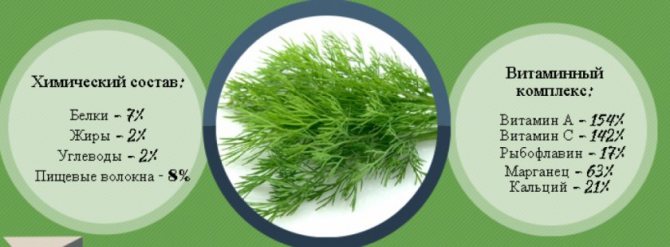

Using parsley and dill
Doctors strongly recommend eating fresh herbs every day, regardless of the season. In winter, with a deficiency of vitamins and an increased risk of viral diseases, its relevance increases. In addition, a bunch of dill and parsley can alleviate or prevent an illness. It is not for nothing that our ancestors valued these plants primarily as a medicine, and only then as a seasoning.
In cooking
Pleasant spicy aroma and specific taste of dill and parsley add spice to culinary dishes. These spices are often added raw, dried, salted and frozen. It is characteristic that after heat treatment, the herbal additive loses its aroma, therefore it is used after turning off the fire. These seasonings will harmoniously go with any dish. They can be combined with cold, hot dishes, pickling, pickling, pickles, casseroles, teas and even confectionery (using for flavoring).
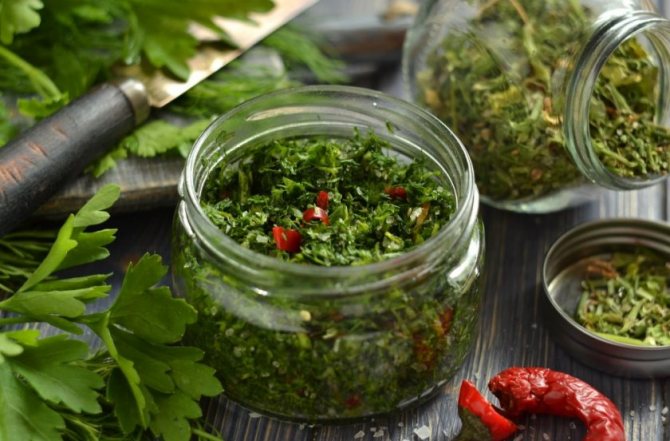

Young dill and parsley stalks are more popular with housewives. They are consumed fresh. And when the plant enters the flowering phase, its foliage and umbrellas are added to conservation. The phytoncides contained there not only have a positive effect on the taste of the product, but also prevent the formation of mold in cans. Dried herbs are often mixed and added to soups, cereals, meat and fish dishes in winter.
Selection of quality products
When buying dill or parsley greens, pay attention to the following:
- greens should be bright and freshly cut;
- make sure the branches are intact and free of pests such as aphids and other insects.
Store greens at home in the refrigerator in plastic wrap until use. Dill tends to wilt and soften quite quickly after being harvested. If you want to keep the greens longer, place the bunch in a jar of water.
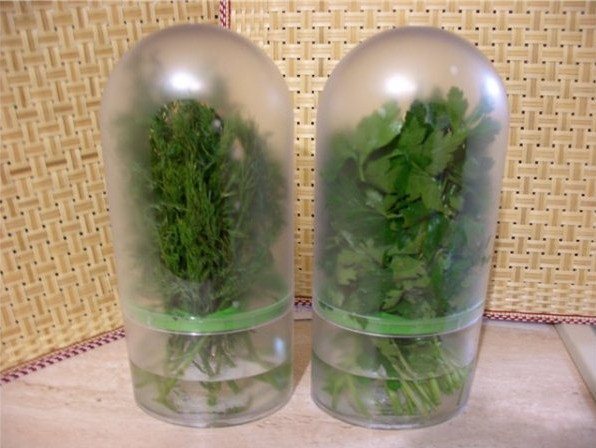

You can purchase special containers for storing greens in the refrigerator at any specialized store.
Possible contraindications for use
Like any drug, parsley and dill have their own side effects and contraindications. These plants should be treated with caution by people diagnosed with the formation of large kidney stones. The fact is that the herbal medicine stimulates the leaching of accumulated salts and sand from the body.
This can provoke the exit of the formed calculus - as a result, it is very likely to be urgently removed by surgery. Caution should also be exercised by those who suffer from cardiovascular diseases. It is strongly not recommended to use dill and parsley for people with low blood pressure - otherwise, dizziness, weakness and loss of strength cannot be avoided.
This side effect is related to the ability of plants to dilate blood vessels and reduce blood pressure. If you do not overdo it with portions, then both plants in any form will not harm, but, on the contrary, will saturate your body with nutrients. Therefore, do not neglect this seasoning and make sure that it does not disappear from the table at any time of the year.
Not for all
Despite all the usefulness of aromatic herbs, not everyone can cook salads and cook green cabbage soup every day.
If you suffer from uraturia (a tendency to form urate kidney stones) or have gout, greens should be a delicacy for you.Moreover, it is safer to use not fresh, but dried parsley or dill.
Do not overdo it with herbs and those who have an elevated hemoglobin level or thrombophlebitis. Due to their high vitamin K content, onions, parsley or dill can cause blood clots in these patients. Particular care must be taken with soups and salads if young nettle leaves are added there. Burning herb is a powerful hemostatic agent that works no worse than medications!
During an exacerbation of gastritis with high acidity, it is also necessary to temporarily part with green spices.
